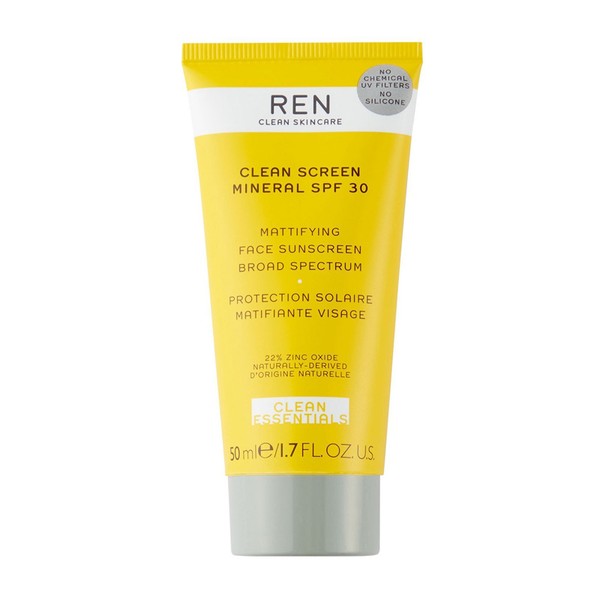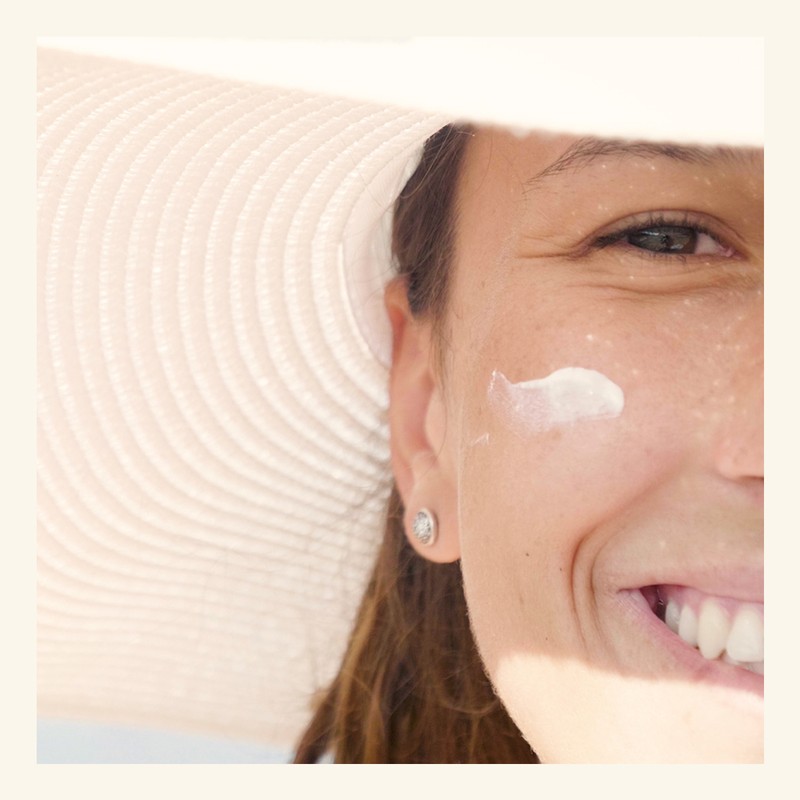
SPF: Everything You Need To Know & The Best Ones To Try
Firstly, Know That SPF Is Essential At Every Age
“There is often this misconception that, as we mature, SPF becomes slightly less important,” explains consultant dermatologist Dr Anjali Mahto. “This is totally untrue. Application of sunscreen should not be different for adults of different ages. The general principles are always the same and should be followed rigorously throughout your life. An ideal SPF offers broad-spectrum protection against both UVA and UVB light. Other additional features worth looking out for include antioxidants (to reduce the anti-ageing damage of free radicals) and anti-pollution agents. The latter are key if you live a busy, city life. Iron oxide is a good ingredient, too, for minimising and protecting against pigmentation/dark spots.”
Choose An SPF That Suits Your Skin
“The only difference for mature skin when it comes to SPF is the type you use,” continues Dr Anjali. “As skin ages, it loses moisture and appears dry due to loss of oestrogen around the time of your menopause. To counteract the problem, use hydrating sunscreens or cream formulations, instead of gels. For mature skin, I also advise opting for mineral formulas over chemical ones – this may help to lock in moisture and keep any dryness at bay.”
Get Acquainted With The Terminology
“Many of us use SPF but without knowing the best ones for our skin type,” advises founder of Ultrasun UK and skin specialist Abi Cleeve. “When shopping for one, make sure it claims that it’s ‘broad spectrum’. This basically ensures that it’s protecting you from both UVA and UVB. Another term to look out for is HEVL – High Energy Visible Light – which is also known as blue light. This is emitted from electronic devices, like your tablets, computers and phones. If your SPF bottle contains this level of protection, then even better. It will prevent any damaging light from penetrating your dermis deeply and having any unnecessary ageing effects. Finally, look for SPF that’s ‘fragrance-free’. Perfume is difficult for the skin to cope with, especially if you have dry, mature skin. To add fragrance to your complexion when you’re already putting it under the attack of harmful UV rays is something to be avoided at all costs. Perfume can also contribute towards pigmentation, so it’s better to get an SPF without any scent whatsoever.”
Aim As High As You Can
“Using a broad-spectrum sunscreen with SPF30 to 50 is suitable for most skin types, regardless of your skin colour,” says Dr Anjali. “Some may prefer to opt for an SPF50 over 30 as we often underapply sunscreen, so going for a higher factor may lead to more protection and better skin in the long run. That said, skin of colour does not burn in the same way as those with paler skin. As a result of this (from a purely skin cancer risk view) wearing an SPF 15 to 30 is adequate for darker skin. However, even darker skin types are vulnerable to the ageing and pigmentation effects from the sun, so it pays to be careful. My final note on numbers is don’t buy into them being ‘additive’. What I mean by this is many of us think a moisturiser with factor 30, then a sunscreen with 50, will add to a total of 80 in terms of protection. That’s not the case and it’s worth knowing that the highest protection you’ll ever reach is only a factor of 50.”
Don’t Buy In To ‘Waterproof’ Formulas
“No sun protection product is waterproof,” adds Abi. “Water-resistance is another term that crops up a lot and this is one that means it is tested to ensure up to 40 minutes of resistance under water. They are a great option for swimming and during sports, but you still need to reapply and top yourself up. There is a false sense of security around these claims, so we always advise reapplication to avoid any burns or sun damage.”
Check Your SPF’s Sell-By Date
“You might think SPF lasts for years, but actually studies show 57% of Brits are wearing out of date sunscreen,” continues Abi. “It’s essential you check the dates on the back of your packaging, and remember that maximum shelf life is six to12 months. To find the date, look for the POA symbol (a small jar) that is on every cosmetics product – it will state the number of months after opening the product can be used efficiently. If it’s out of date, chuck it. You need maximum efficacy and protection, which is something you can’t guarantee if your dates are off.”
Make Sure You’re Applying Enough
“Most of us grossly under apply our sunscreen, so your skin rarely gets the factor that’s stated on the bottle,” adds Dr Anjali. “In studies, sunscreen is used at a thickness of 2mg/cm2; in real life scenarios we use around 0.75-1mg/cm2. Ensure you are using the correct amount of sunscreen. This should be at least half a teaspoon for the face and neck and about a shot glass full for the body.” Abi agrees: “As a rule of thumb, use a teaspoon of SPF for each arm, leg, front, back and face – including your neck and ears. It’s advisable you apply sun protection to cool, clean and dry skin, too. If you apply your SPF in direct sunlight, up to 60% can evaporate from your skin’s surface before it’s had a chance to absorb.”
Always Use A Dedicated Formula
“What I mean by this is foundation with SPF isn’t the equivalent of a broad-spectrum sunscreen,” says Dr Anjali. “SPF is only a marker of UVB protection, so a foundation may offer no to little protection against UVA rays which are also very damaging. Secondly, we don’t apply the right quantity or thickness of a foundation compared to a sunscreen to get similar SPF values. Always stick to dedicated formulas, as this is what has the best benefits for your skin. Not only will it reduce your risk of sunburn – and subsequently skin cancer – it will also prevent further premature signs of skin ageing. This includes fine lines, wrinkles, pigmentation and sunspots. Wearing sunscreen – at any age – can prevent further development of these changes. It’s never too late.”
Do Apply SPF Daily
“I’m often asked why you apply SPF daily, and the answer is simple: UVA rays,” says Abi. “UVA rays are a year-round skin damager, penetrating cloud and glass, impacting cumulatively beneath your skin’s surface. Think UV ‘A’ for ageing. According to the WHO (World Health Organisation), up to 90% of the visible changes commonly attributed to ageing may be caused by sun exposure. When you think about it, it’s so easy to prevent, it seems mad any of us even question adding SPF to our daily regimes. No serum or moisturiser can reverse UV damage and the ageing it causes. However, a good UV protection can, and there are now so many thin, lightweight formulas, it’s never been simpler to find good protection.”
Finally, Understand The Difference Between Mineral & Chemical SPF
“When comparing physical with chemical filters, there are advantages and disadvantages with both,” Abi finishes. “Chemical filters absorb UVA and UVB rays so that your skin cells don’t have to. Physical filters, however, protect the skin physically with a layer or barrier, so those rays find it hard to get to the skin and do their damage. Both are great, but there are considerations. With physical filters, the disadvantage can be that the skin is coated in a thicker layer which can cause sensitivity and issues like prickly heat. Thick, physical filters often mean that the skin can’t cool naturally – in simple terms, it’s tough for the skin to ‘breathe.’ With chemical filters, there is much in the press and available online about how much we expose our systems to. The skin is of course a great carrier of product into our body. Knowing this, it’s worth being mindful of what we put on it and doing our research thoroughly.”
4 Easy-To-Miss Sunscreen Spots
Even if you think you’re covered, chances are you may have missed a spot. Experts reveal the most commonly missed areas…
Around & Between Eyes
If you often get irritation in this area, try using a sports formula; they’re designed to be gentler and less likely to cause problems.
Your Underarms
This is especially true if you use sprays. Experts recommend massaging in SPF everywhere you can and to take care of application in breezy conditions. Your best bet is to stand naked and apply liberally all over.
The Parting
No one likes sunscreen in their hair, but it’s one of the main areas doctors say they see melanoma. Try dabbing it right on the parting itself or use a spray if you prefer.
Lips
Licking, wiping and blotting can remove lip protection. Try using a waxy balm, such as EOS SPF30 Protection, and apply it as often as you can.
Shop The SPFs The Pros Rate For Mature Skin...
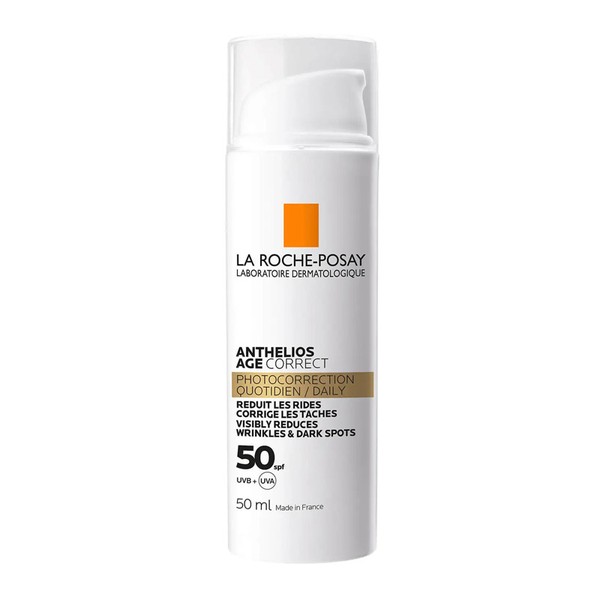

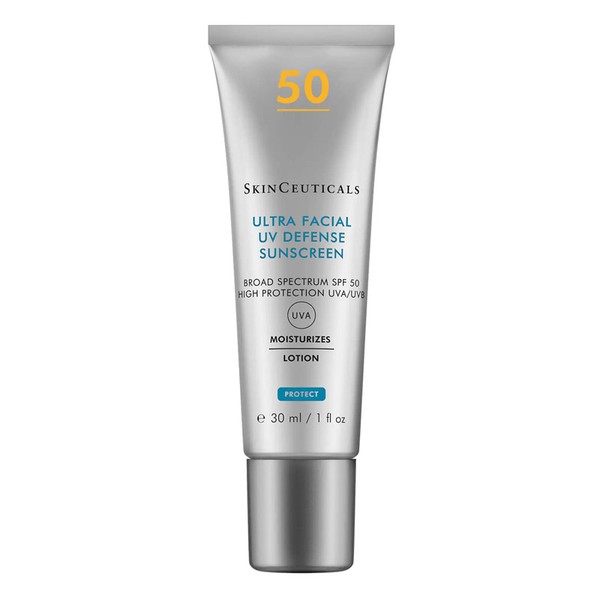
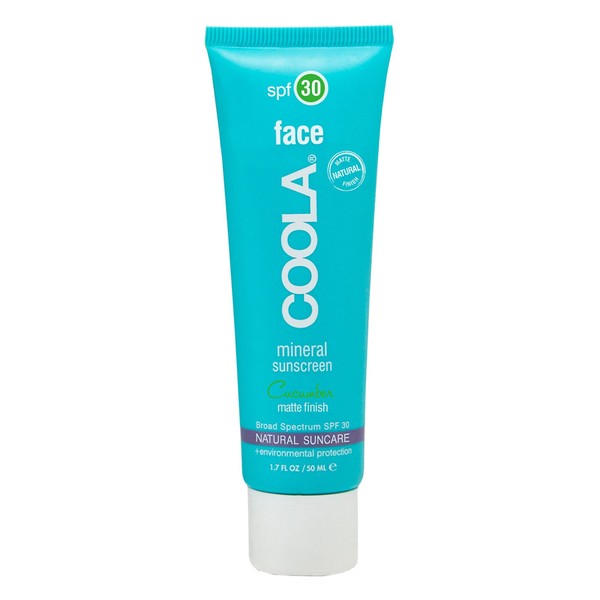
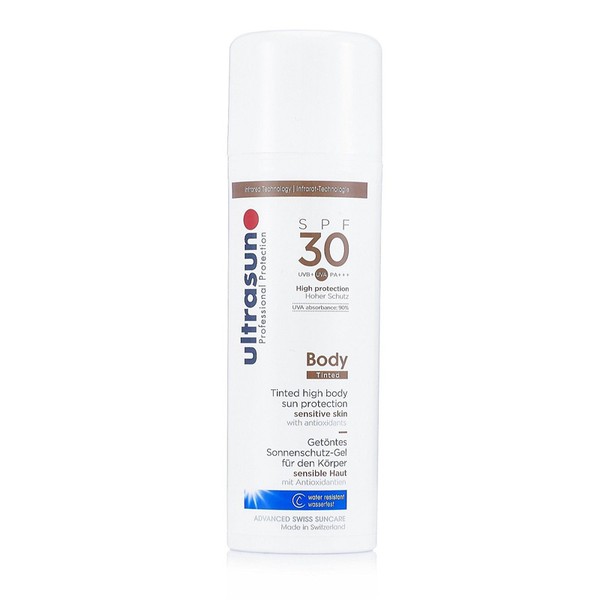
Visit Skin55.co.uk & UltraSun.co.uk
DISCLAIMER: We endeavour to always credit the correct original source of every image we use. If you think a credit may be incorrect, please contact us at info@sheerluxe.com.
